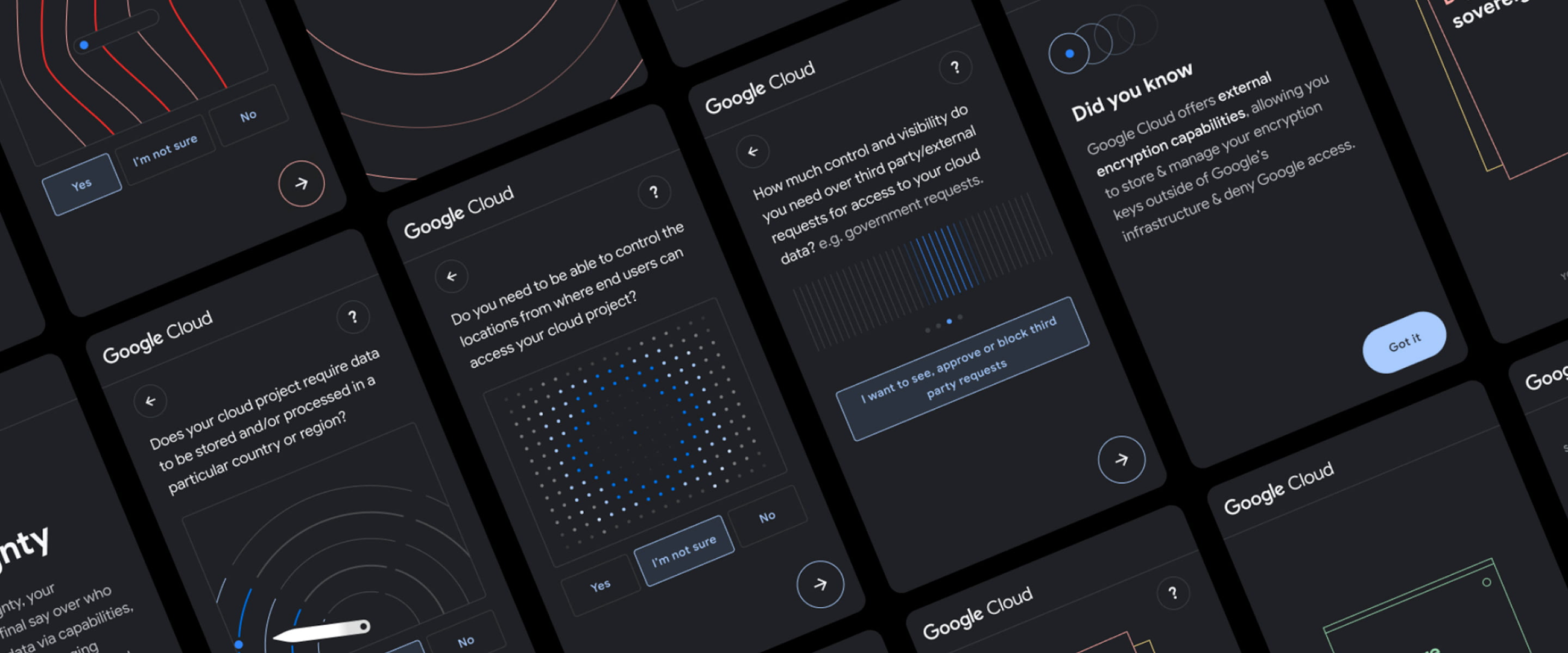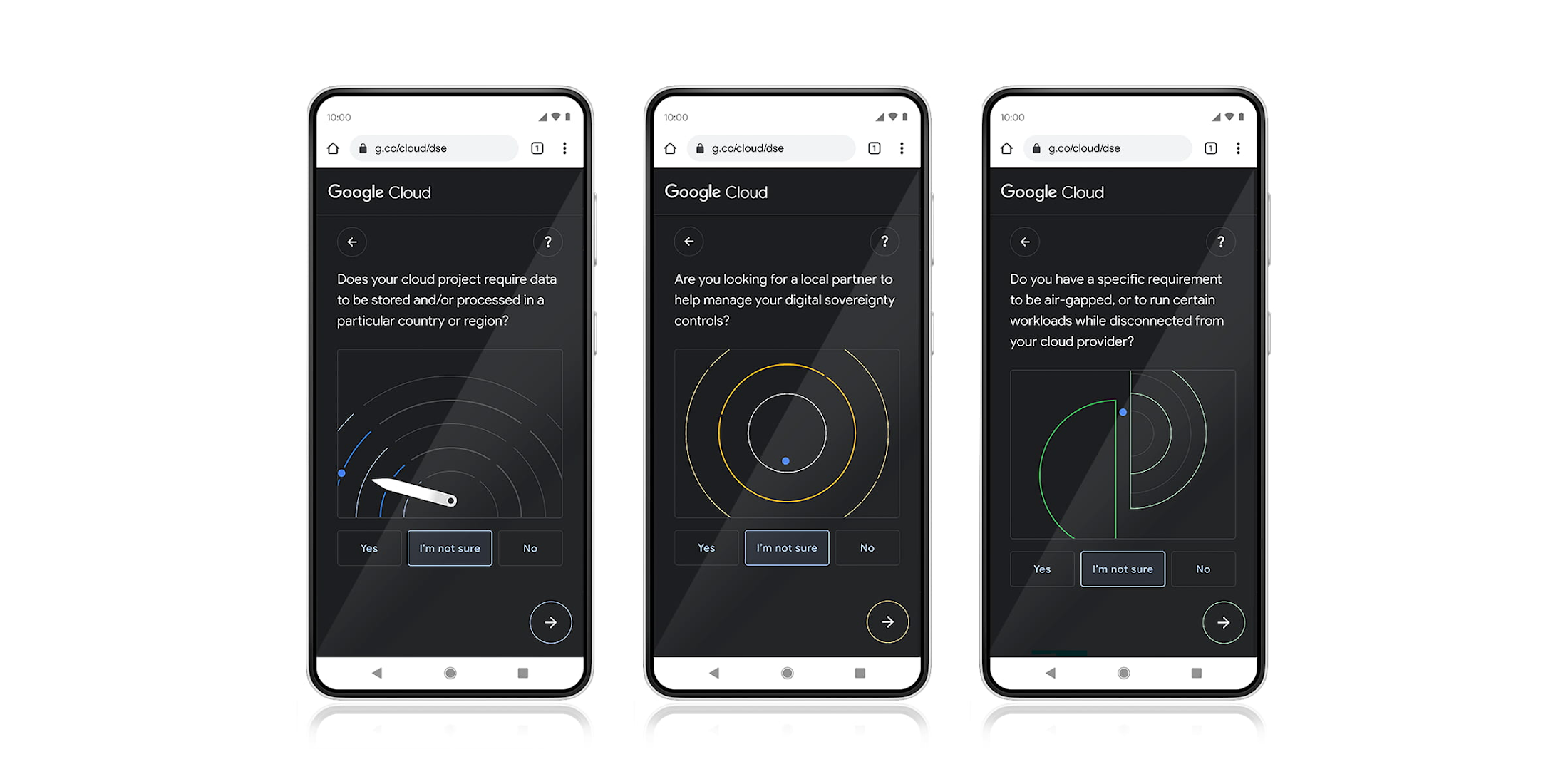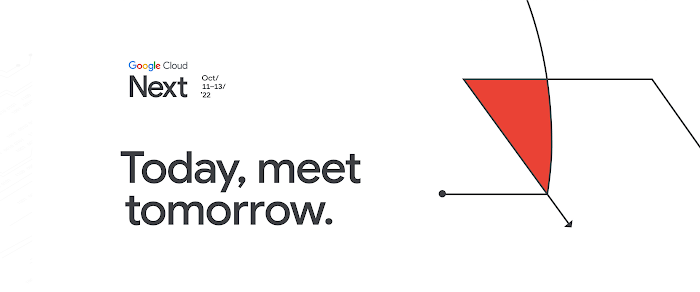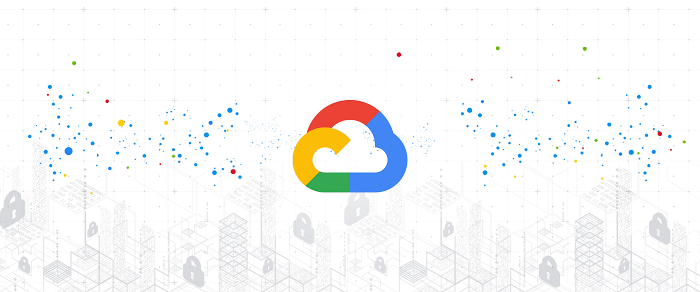Announcing Google Cloud’s new Digital Sovereignty Explorer

Robert Sadowski
Director, Product Marketing, Security & Trust
Digital sovereignty continues to be a top priority for organizations working to advance or begin their digital transformation efforts. Over the past few years, Google Cloud has worked extensively with customers, partners, policy makers and governments around the world to understand evolving sovereignty requirements. In Europe, this has resulted in our “Cloud. On Europe’s Terms” initiative and a broad portfolio of Sovereign Solutions we have already brought to market to help support customers’ current and emerging needs as they bring more workloads to the cloud.
One thing remains clear from our ongoing discussions in the market: Designing a digital sovereignty strategy that balances control and innovation is challenging because:
Foundational concepts are not always well-understood, including regulatory requirements, legal safeguards, and risk management.
Many organizations struggle to articulate specific requirements, particularly when it comes to how sovereign strategies enable digital transformation.
Choosing the best potential technologies and solutions for your organization’s needs can be difficult.
A shortage of advisory capacity and expertise in the market can make these challenges even harder to overcome.
Google Cloud’s Digital Sovereignty Explorer is designed to help you make progress on all of these issues. Initially focused on the needs of European organizations, the Explorer is an online, interactive tool that takes individuals through a guided series of questions about their organizations’ digital sovereignty requirements. It seeks to simplify terms and explain important concepts.
At each step along the way, the Explorer aims to help you to clarify key considerations and tradeoffs in your digital sovereignty options, to understand available solution options, and to make more informed choices about potential solutions for your particular cloud workloads.
Upon completing the Explorer, you will receive a personalized report summarizing your responses with additional reference material and recommendations on potentially applicable solutions from Google Cloud and our European partners.


Google Cloud recognised the need for resources like the Digital Sovereignty Explorer. Industry Analysts agree. IDC, who advises global organizations on digital sovereignty strategies, notes:
“The relatively new concept of cloud data sovereignty is still in its evolutionary stages where users are only just starting to understand all the implications it will have on their cloud strategies. Defining what sovereignty actually means from the outset is vital if buyers are able to make informed decisions," said Rahiel Nasir, Associate Research Director, European Cloud and Global Lead, Worldwide Digital Sovereignty, IDC.
Exploring Digital Sovereignty
Digital Sovereignty discussions often focus only on data residency. The Digital Sovereignty Explorer aims to broaden the discussion in line with Google Cloud’s vision of sovereignty covering three distinct pillars:
Data sovereignty (including control over encryption and data access),
Operational sovereignty (visibility and control over provider operations), and
Software sovereignty (providing the ability to run and move cloud workloads without being locked-in to a particular provider, including in extraordinary situations such as stressed exits).
The Explorer delves into each pillar with a series of questions designed to surface both clearly perceived and less obvious requirements. For example, the guided exploration of data sovereignty covers topics such as regional data residency, administrative access controls, third-party access restrictions, and encryption key management strategies. Operational sovereignty delves into topics such as preference for local partner operations, including technical support staffing options, and the desired scope of partner oversight. Software sovereignty explores topics such as workload-specific needs for on-premises storage, infrastructure, or disconnected operations, and the potential tradeoffs involved.
Through the Explorer, for example, a manufacturer could determine which safeguards they might employ to limit insider access to intellectual property. A government agency could learn about options for disconnected operations for cloud infrastructure processing their most sensitive data. The interactive nature of the tool helps organizations to develop the right control strategies for their cloud workloads based on the sensitivity of their data, operations, policies, and regulatory obligations.
How to get started
The Digital Sovereignty Explorer is available and accessible today at no charge to any organization that may benefit from its guided exploration of this critical topic. The Explorer is available in English, French, and German, with Italian and Spanish versions coming soon in April.
We plan to evolve the Explorer to incorporate additional capabilities and regions as new solutions become available. We hope it will help strengthen your understanding of digital sovereignty and that you will find it useful in developing requirements and a solution roadmap to accelerate your cloud transformation.


